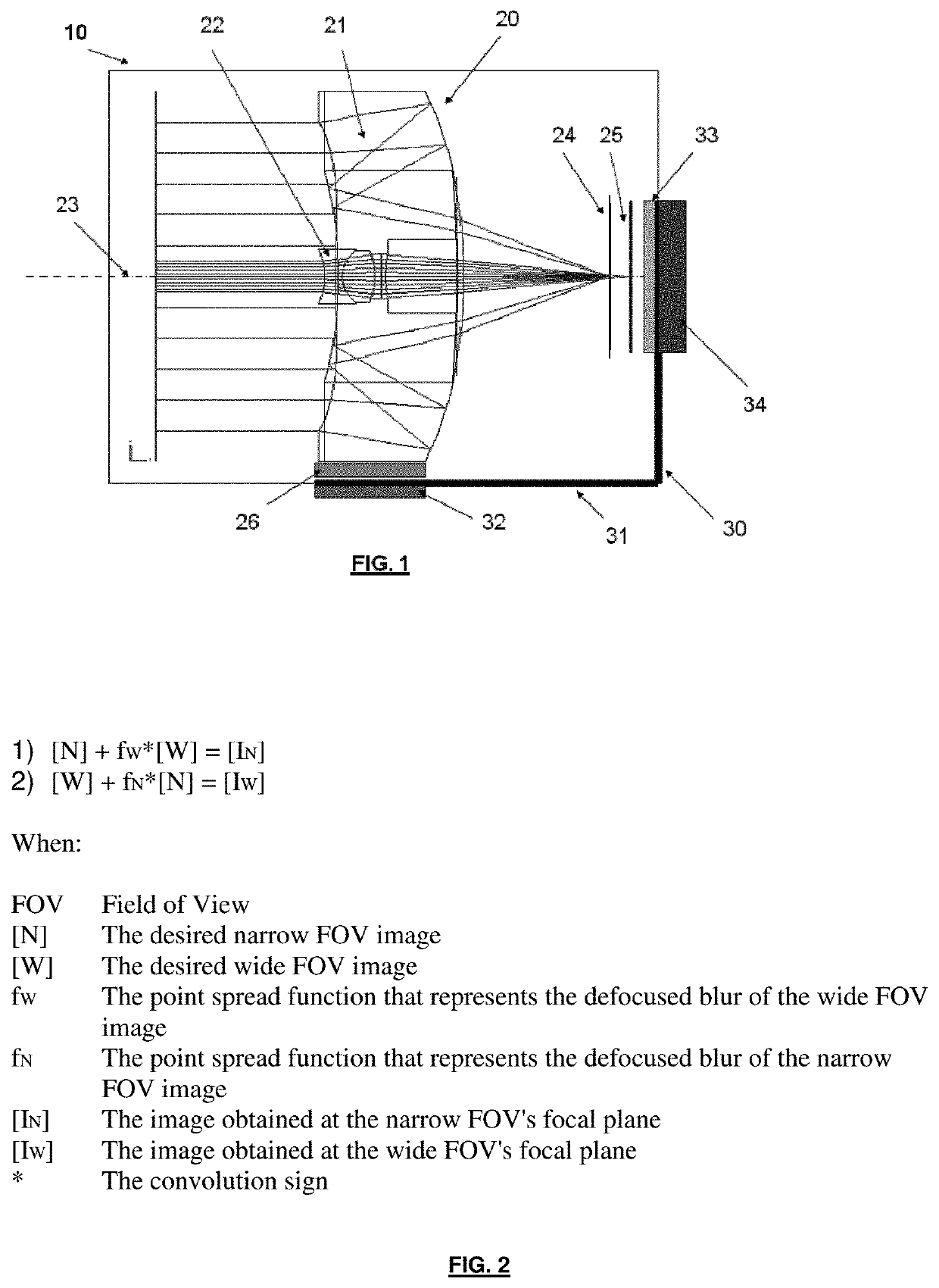Method for switching optical fields of view
- Summary
- Abstract
- Description
- Claims
- Application Information
AI Technical Summary
Benefits of technology
Problems solved by technology
Method used
Image
Examples
Embodiment Construction
[0011]Referring now to FIG. 1, it shows a preferred embodiment of a dual field of view digital camera 10 with a single imaging sensor and separates focal planes, which is constructed and operated in accordance with the principles of the present invention. The digital camera 10 comprises a dual field of view optical system 20 and the camera housing 30. The optical system 20 comprises a catadioptric monoblock lens 21 associated with the narrow field of view and refractive lenses 22 associated with the wide field of view and is located at the central obscuration of lens 21. Lens 21 has refractive and reflective aspheric surfaces at both sides. The lenses 21 and 22 have common optical axis 23 and separate focal planes 24 and 25 with separation greater than the focal depth of the lenses. A magnet 26 is attached to the optical system 20. The camera housing 30 comprises the case 31, the coils 32, the imaging sensor 33 and the digital processor 34, which preferably serves as both a controll...
PUM
 Login to View More
Login to View More Abstract
Description
Claims
Application Information
 Login to View More
Login to View More - R&D Engineer
- R&D Manager
- IP Professional
- Industry Leading Data Capabilities
- Powerful AI technology
- Patent DNA Extraction
Browse by: Latest US Patents, China's latest patents, Technical Efficacy Thesaurus, Application Domain, Technology Topic, Popular Technical Reports.
© 2024 PatSnap. All rights reserved.Legal|Privacy policy|Modern Slavery Act Transparency Statement|Sitemap|About US| Contact US: help@patsnap.com








